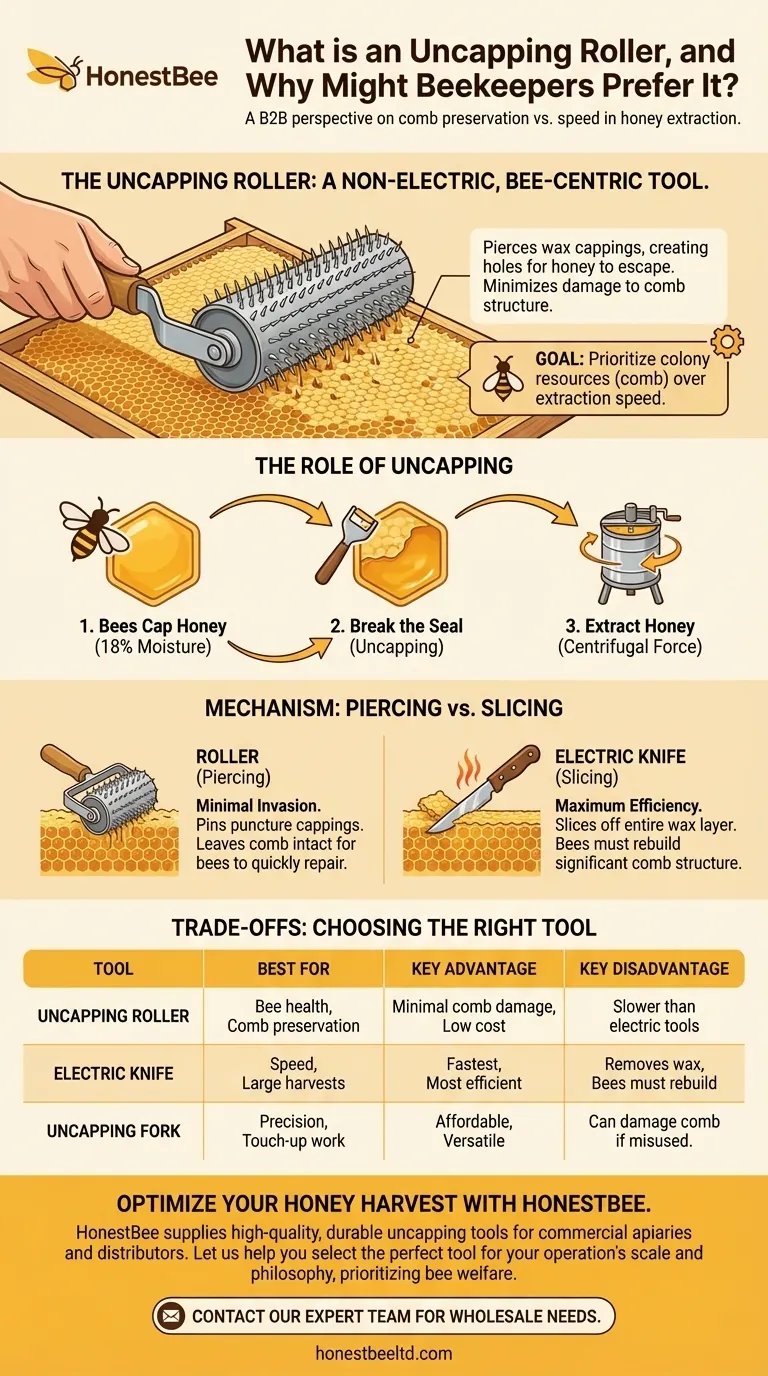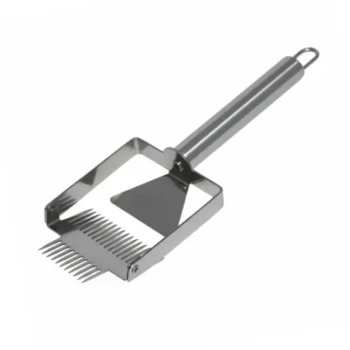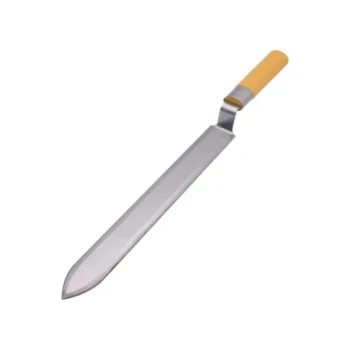An uncapping roller is a simple, non-electric beekeeping tool covered in small, sharp pins designed to pierce the wax cappings on a honeycomb frame. Beekeepers prefer it when their goal is to minimize damage to the comb and reduce the amount of wax the bees must rebuild, prioritizing the colony's resources over the speed of honey extraction.
The core decision in choosing an uncapping tool is a trade-off between speed and comb preservation. While electric knives offer maximum efficiency for large harvests, the uncapping roller excels at keeping the comb structure intact, making it a favorite for many hobbyist or bee-centric beekeepers.

The Role of Uncapping in Honey Extraction
To harvest honey, you must first remove the protective wax layer that bees build over every cell of ripened honey. This process is called "uncapping," and the tool you choose directly impacts your workflow and the bees themselves.
Why Bees Cap Their Honey
Bees place a pristine wax capping over each cell once the honey inside has been dehydrated to the correct moisture content (around 18%). This seal protects the honey from moisture and contaminants, preserving it indefinitely.
Breaking the Seal for Extraction
To get the honey out, you must break these cappings. Once the cells are open, the frame is placed in a honey extractor, which uses centrifugal force to spin the honey out of the comb, leaving the comb itself intact for the bees to reuse.
How an Uncapping Roller Works
Unlike tools that slice off the top layer of the comb, the uncapping roller takes a fundamentally different approach. It is designed for minimal invasion.
The Mechanism: Piercing vs. Slicing
The roller is covered in small plastic or metal pins. As you roll it firmly across the face of the comb, these pins puncture the wax cappings, creating holes for the honey to escape during extraction. This action is much less destructive than slicing off the entire wax layer with a knife.
The Primary Benefit: Minimal Wax Removal
Because the roller only perforates the cappings, it leaves the vast majority of the wax and the underlying cell structure untouched. Removing less wax is a significant advantage.
The Impact on the Bees
Bees expend a tremendous amount of energy to produce wax. By leaving most of the comb structure intact, the uncapping roller allows the bees to repair the cells very quickly. They simply have to patch the small holes rather than rebuilding entire sections of the comb, saving valuable time and resources.
Understanding the Trade-offs
The uncapping roller is an excellent tool, but it's not the best choice for every situation. Its effectiveness must be weighed against other common tools like electric knives and uncapping forks.
Speed and Efficiency
An electric uncapping knife, which uses heat to slice through wax, is by far the fastest and most efficient tool. It is the preferred choice for commercial operations or beekeepers with many hives to process. The roller is significantly slower.
Comb Integrity
The uncapping roller is the clear winner for preserving the comb. A knife removes the entire top layer of wax and comb, which the bees must completely rebuild. An uncapping fork or capping scratcher can be precise but can also cause more damage if used aggressively.
Cost and Simplicity
The roller and the fork are the most inexpensive and simple options. They require no electricity and have a very low learning curve, making them ideal for beginners or beekeepers on a tight budget.
Completeness of Uncapping
No single tool is perfect. Knives can miss low spots in the comb, and rollers can skip over indented cells. For this reason, many beekeepers use a tool like a capping scratcher or fork to touch up any cells the primary tool missed.
Making the Right Choice for Your Goal
The best uncapping tool is the one that aligns with your specific needs, the scale of your operation, and your beekeeping philosophy.
- If your primary focus is speed and high-volume extraction: An electric uncapping knife is the most effective tool for the job.
- If your primary focus is minimizing comb damage and cost: The uncapping roller is the superior choice, as it preserves the bees' hard work.
- If your primary focus is versatility and precision cleanup: An uncapping fork or scratcher is an essential and affordable tool to have on hand, regardless of your main method.
Ultimately, selecting your tool is about balancing the needs of your bees with the practical demands of your honey harvest.
Summary Table:
| Tool | Best For | Key Advantage | Key Disadvantage |
|---|---|---|---|
| Uncapping Roller | Bee health, comb preservation | Minimal comb damage, low cost | Slower than electric tools |
| Electric Knife | Speed, large harvests | Fastest, most efficient | Removes wax, bees must rebuild |
| Uncapping Fork | Precision, touch-up work | Affordable, versatile | Can damage comb if misused |
Optimize Your Honey Harvest with the Right Tools
As a beekeeper, your choice of equipment directly impacts your colony's health and your harvest's efficiency. HONESTBEE supplies commercial apiaries and beekeeping equipment distributors with high-quality, durable uncapping tools, including rollers, knives, and forks, designed for performance and bee welfare.
Let us help you select the perfect tool for your operation's scale and philosophy. Contact our expert team today to discuss your wholesale needs and ensure your bees can get back to work faster.
Visual Guide

Related Products
- Professional Honey Uncapping Roller for Efficient Harvesting
- Stainless Steel Pivoting Honey Uncapping Fork with Plastic Handle
- Professional Honey Uncapping Fork Tool with Customizable Tine Options
- All Stainless Steel Double Sided Pivoting Honey Uncapping Fork
- Stainless Steel Dual Blade Uncapping Plane
People Also Ask
- What is an uncapping fork? A Precision Tool for Efficient Honey Harvesting
- What is the best method for uncapping honey? A Guide to Speed vs. Comb Preservation
- What is a decapping knife used for? Unseal Honeycomb for an Efficient Harvest
- What are the benefits of using an uncapping roller? Save Bee Energy and Boost Hive Productivity
- What is the advantage of an uncapping plane over an electric knife? Precision Cutting for Less Honey Waste



















